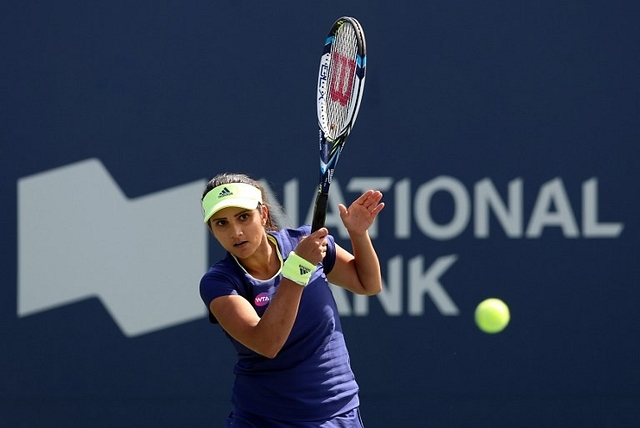
After Sania Mirza, Who?
It is not lack of talent that is stopping the next generation of women tennis players in India. It is the absence of a proper mechanism of sponsorship.
In the last few months, Sania Mirza has created history with Martina Hingis and that obviously has been the talk of the town. To see an Indian athlete consistently win week after week has been refreshing. We have hailed Mirza as one of the greatest Indian sportspersons ever, conferred her with state honors and generally gone about thumping our chests on social media about (finally) the arrival of an Indian (woman) tennis player who can win Grand slams and tournaments at the highest level.
Yes, what Mirza is doing is special and it must be celebrated. But the attention she is getting should not blind us from another equally pressing issue – who after her?
India has never really been turning out tennis players by the dozen but at least the men have always been represented at the highest level.
In the 1954 Ramanathan Krishnan became the first Asian player to win the boy’s singles title at Wimbledon. During the 1960s he reached Wimbledon semi-final twice. In the 1970s emerged Vijay Amritraj, Anand Amritraj and Ramesh Krishnan. In the late 1980s early 1990s emerged Zeeshan Ali, Mahesh Bhupathi and Leander Paes. The 2000s brought with it Rohan Bopanna, Harsh Mankad and Karan Rastogi. While currently Indian men’s tennis is represented by Sriram Balaji, Yuki Bhambri, Somdev Devvarman, Sanam Singh and Divij Sharan to name a few.
Compare this to Indian women’s tennis.
Nirupama Mankad (formerly called Vasant) won the Asian women’s tennis championship in 1965 at the age of 17. She played Wimbledon junior event in 1965 and was India’s top ranked tennis player between 1965 and 1978. It was only after a wait of close to 2 decades that another Indian woman tennis player emerged on the International platform. At the 1998 Australian Open, Nirupama Sanjeev (formerly Vaidyanathan) became the first Indian woman to win a main draw Grand Slam round. With her retirement in the early 2000s a group of young Indian girls were rising – Sania Mirza, Ankita Bhambri, Shikha Uberoi, Sunitha Rao, Tara Iyer, Isha Lakhani and Sanaa Bhambri – on the international junior circuit. Only Sania managed to make the transition to the next level.
But what is perturbing is that since Sania turned pro in 2003, the average Indian has not heard of any other Indian woman breaking through. And the problem is not talent.
Take for example Prerna Bhambri who lifted the national women’s championship crown this year for the record fourth year running or Pranjala Yadlapalli who won the WTA Future Stars under-16 title in Singapore this week. These are just two examples from a group of 20-30 girls who have the raw talent and the fight to take on the daily grind of professional tennis.
What has unfortunately stopped them is a lack of sponsors. Shikha Uberoi in an interview in 2013 rightly pointed out how Indian women tennis players “struggled for sponsors even as the limelight was focused on just one person.” During our conversation even Prerna pointed out how “there needs to be a major overhaul in the engagement of corporates and sponsors in the game. To compete on the professional circuit, one needs to spend 30-35 lacs every year. Unfortunately the commitment of corporates and sponsors isn’t up to the mark in India. It gets really hard to travel year on year. Your family savings and prize money has to sustain your travel.”
Prerna has been representing India since she was 14 and made her Fed Cup debut at 20. She has won the national women’s championship crown for a record fourth year running. Yet she does not have a sponsor.
“Indians are considered to have the best hands in the tennis; the gap is in fitness and exposure. This can be built only through superior training with world class coaches and travelling abroad, playing in different conditions. We have the talent. It is up to the other stakeholders to come forward and help the players” laments Prerna.
Prerna is right, it is up to the association to find sponsors for talented junior players, it is up to the media to highlight stories of triumph and struggle that the junior player go through, it is up to us to nurture the next Sania Mirza. Because the next Sania Mirza has always existed in the system, unfortunately what has not existed is backing by sponsors to ensure that she does not slip into oblivion.